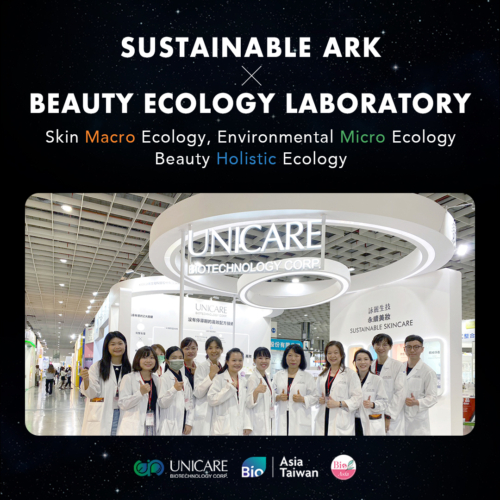Ethnic Differences in Hair?! Tailor Scalp Care Formulas for Different Ethnic Groups.
Hair is not merely a part of the human body; it serves as a reflection of individual style and characteristics, as well as an embodiment of racial and geographical diversity. The distinctions in appearance, density, and growth rate of hair across different races are not only fascinating but also deeply connected to the health of the scalp and specific needs. These differences necessitate unique care techniques and products to ensure scalp health and luster. This article will consolidate numerous research studies to delve into the tailored design of scalp care formulations for various ethnic groups. Join us in unraveling the exciting latest developments in hair science!
Diverse Hair Characteristics and Care Requirements Across Ethnicities
Observing hair across various global ethnicities, it is easy to recognize a remarkable diversity in characteristics, with differences in structure, growth rate, and environmental impact being key considerations. Designing appropriate care formulations requires a deep understanding and interpretation of these differences.
Asian Hair: Protection and Enhancement of Straightness and Smoothness
Asian hair, with its unique straight and smooth appearance, symbolizes Eastern beauty (Franbourg et al., 2003; Loussouarn et al., 2016). According to a 2020 study by Leerunyakul and Suchonwanit, Asian hair contains more lipids, making it less prone to UV damage than other races, such as Caucasians and Africans. However, protection remains a vital concern, given the subtropical regions where Asians primarily reside. Formulation design must incorporate ingredients to protect against climatic and environmental damage. Moreover, common skin issues like dandruff in Asians (Leerunyakul & Suchonwanit, 2020) demand consideration for sebum balance. The thoughtful formulation can preserve the hair’s natural beauty and effectively prevent common scalp problems, offering comprehensive support for Asian hair care.
Caucasian Hair: Diversity and Precision Care
The hallmark of Caucasian hair lies in its immense diversity (Loussouarn et al., 2016; Leerunyakul & Suchonwanit, 2020). From thickness to curliness, various attributes require more refined and personalized care. During product development, special attention must be paid to regional and climatic needs. For example, in the cold Northern European regions, hydration is crucial to prevent dryness and damage; in sun-rich Mediterranean areas, antioxidant and UV protection ingredients are necessary. Through precise market segmentation and analysis of specific needs, companies can enhance product competitiveness and deeply satisfy Caucasian hair care requirements.
African Hair: Nourishing and Protecting Spiral Structure
African hair grows slowly and is less dense (Loussouarn et al., 2005), and its unique spiral structure makes it more prone to drying and damage, despite its rugged appearance. This structure renders African hair more fragile and prone to breakage (Khumalo et al., 2000). Therefore, hair care product design for Africans must focus on enhancing moisture and elasticity. Ingredients that deeply nourish and repair the cuticle must be included to combat dryness and damage. Proper hydration and nourishment not only maintain a healthy appearance but also increase resilience, reducing breakage. Such care methods protect and accentuate the unique spiral structure, emphasizing natural beauty while maintaining hair vitality and health.
Through extensive research into the diverse hair characteristics of different ethnicities, Unicare is committed to meticulously designing and formulating hair care products that holistically cater to the needs of various racial groups. When creating unique formulations, we consider not only the genetic characteristics of ethnic hair but also consumers’ living environments, gender, age, and scalp condition. Are you still seeking professional product design services? Feel free to contact us and let our expert team collaborate with you to explore new opportunities in scalp care, crafting healthy and beautiful scalp care solutions together!
Franbourg, A., et al. “Current research on ethnic hair.” Journal of the American Academy of Dermatology 48.6 (2003): S115-S119.
Khumalo, N. P., et al. “What is normal black African hair? A light and scanning electron-microscopic study.” Journal of the American Academy of Dermatology 43.5 (2000): 814-820.
Leerunyakul, Kanchana, and Poonkiat Suchonwanit. “Asian hair: a review of structures, properties, and distinctive disorders.” Clinical, Cosmetic and Investigational Dermatology (2020): 309-318.
Li, Becky S., and Howard I. Maibach, eds. Ethnic skin and hair and other cultural considerations. Springer International Publishing, 2021.
Loussouarn, Geneviève, Charles El Rawadi, and Gilles Genain. “Diversity of hair growth profiles.” International journal of dermatology 44 (2005): 6-9.
Loussouarn, Geneviève, et al. “Diversity in human hair growth, diameter, colour and shape. An in vivo study on young adults from 24 different ethnic groups observed in the five continents.” European Journal of Dermatology 26 (2016): 144-154.



